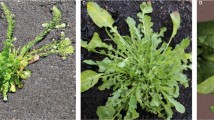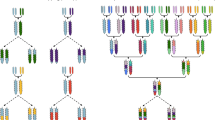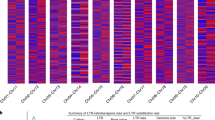Abstract
The oilseed species Thlaspi arvense (pennycress)—a weed that was only recently removed from the wild—has the potential to provide new sources of food and bioproducts when grown as a winter cover crop. Domestication of wild species has historically taken hundreds to thousands of years, but by making use of large-scale high-throughput comparative gene and phenotype analyses, along with recently developed technological tools, it has been possible to greatly accelerate this process. By taking advantage of extensive gene and phenotype knowledge in the related plant Arabidopsis, mutations for early maturity, reduced pod shatter, reduced seed glucosinolates and improved fatty acid composition were identified. Progress has been made to rapidly stack these traits in order to domesticate the plant, allowing it to fit within current crop cycles and to have improved seed harvestability and nutritional content. Pennycress, domesticated as a winter cover crop, may provide new sources of food, animal feed and bioproducts—and solutions to food security.
This is a preview of subscription content, access via your institution
Access options
Access Nature and 54 other Nature Portfolio journals
Get Nature+, our best-value online-access subscription
$29.99 / 30 days
cancel any time
Subscribe to this journal
Receive 12 digital issues and online access to articles
$119.00 per year
only $9.92 per issue
Buy this article
- Purchase on Springer Link
- Instant access to full article PDF
Prices may be subject to local taxes which are calculated during checkout





Similar content being viewed by others
Data availability
All sequence information described in this study is contained within the Supplementary Information. All plant materials described in this report are available upon completion of material transfer agreements.
References
Dunn, M. et al. Perceptions and use of cover crops among early adopters: findings from a national survey. J. Soil Water Conserv. 71, 29–40 (2016).
Roesch-McNally, G. E. et al. The trouble with cover crops: farmers’ experiences with overcoming barriers to adoption. Renew. Agr. Food Syst. 33, 322–333 (2017).
Phippen, W. B. & Phippen, M. E. Soybean seed yield and quality as a response to field pennycress residue. Crop. Sci. 52, 2767–2773 (2012).
DeHaan, L. R. et al. A pipeline strategy for grain crop domestication. Crop Sci. 56, 917–930 (2016).
Isbell, T. A. US effort in the development of new crops (Lesquerella, pennycress coriander and Cuphea). Ol. Corps Gras Li. 16, 205–210 (2009).
Jordan, N. et al. Sustainable development of the agricultural bio-economy. Science 316, 1570–1571 (2007).
Sedbrook, J. C., Phippen, W. B. & Marks, M. D. New approaches to facilitate rapid domestication of a wild plant to an oilseed crop: example pennycress (Thlaspi arvense L.). Plant Sci. 227, 122–132 (2014).
Johnson, G. A., Kantar, K. B., Betts, K. J. & Wyse, D. L. Field pennycress production and weed control in a double crop system with soybean in Minnesota. Agron. J. 107, 532–540 (2015).
Weyers, S. et al. Reduced-nutrient leachates in cash cover crop-soybean systems. J. Environ. Qual. 48, 660–669 (2019).
Johnson, G. A. et al. Yield tradeoffs and nitrogen between pennycress, Camelina, and soybean in relay- and double-crop systems. Agron. J. 109, 2128–2135 (2017).
Moser, B. R., Shah, S. N., Winkler-Moser, J. K., Vaughn, S. F. & Evangelista, R. L. Composition and physical properties of cress (Lepidium sativum L.) and field pennycress (Thlaspi arvense L.) oils. Ind. Crops Prod. 30, 199–205 (2009).
Moser, B. R., Knothe, G., Vaughn, S. F. & Isbell, T. A. Production and evaluation of biodiesel from field pennycress (Thlaspi arvense L.) oil. Energy Fuels 23, 4149–4155 (2009).
Moser, B. R. Biodiesel from alternative oilseed feedstocks: Camelina and field pennycress. Biofuels 3, 193–209 (2012).
Fan, J., Shonnard, D. R., Kalnes, T. N., Johnsen, P. B. & Rao, S. A life cycle assessment of pennycress (Thlaspi arvense L.)-derived jet fuel and diesel. Biomass Bioenergy 55, 87–100 (2013).
Hart, C. E. Feeding the ethanol boom: where will the corn come from. Iowa Ag Rev. 12, 4 (2006).
Warwick, S. I., Francis, A. & Susko, D. J. The biology of Canadian weeds. 9. Thlaspi arvense L. (updated). Can. J. Plant Sci. 82, 803–823 (2002).
Bell, J. From rapeseed to canola: a brief history of research for superior meal and edible oil. Poultry Sci. 61, 613–622 (1982).
Knutsen, H. K. et al. Erucic acid in feed and food. EFSA J. 14, 4593 (2016).
Wittkop, B., Snowdon, R. J. & Friedt, W. Status and perspectives of breeding for enhanced yield and quality of oilseed crops for Europe. Euphytica 170, 131 (2009).
Alexander, J. et al. Glucosinolates as undesirable substances in animal feed - Scientific Opinion of the Panel on Contaminants in the Food Chain. EFSA J. 6, 590 (2008).
Chopra, R. et al. Translational genomics using Arabidopsis as a model enables the characterization of pennycress genes through forward and reverse genetics. Plant J. 96, 1093–1105 (2018).
Dorn, K. M., Fankhauser, J. D., Wyse, D. L. & Marks, M. D. A draft genome of field pennycress (Thlaspi arvense) provides tools for the domestication of a new winter biofuel crop. DNA Res. 22, 121–131 (2015).
Dorn, K. M., Fankhauser, J. D., Wyse, D. L. & Marks, M. D. De novo assembly of the pennycress (Thlaspi arvense) transcriptome provides tools for the development of a winter cover crop and biodiesel feedstock. Plant J. 75, 1028–1038 (2013).
Provart, N. J. et al. 50 years of Arabidopsis research: highlights and future directions. New Phytol. 209, 921–944 (2015).
Abbo, S. et al. Plant domestication versus crop evolution: a conceptual framework for cereals and grain legumes. Trends Plant Sci. 19, 351–360 (2014).
De Bruin, J. L. & Pedersen, P. Soybean seed yield response to planting date and seeding rate in the Upper Midwest. Agron. J. 100, 696–703 (2008).
Noh, B. et al. Divergent roles of a pair of homologous jumonji/zinc-finger-class transcription factor proteins in the regulation of Arabidopsis flowering time. Plant Cell 16, 2601–2613 (2004).
Jeong, J. H. et al. Repression of FLOWERING LOCUS T chromatin by functionally redundant histone H3 lysine 4 demethylases in Arabidopsis. PLoS ONE 4, e8033 (2009).
Crevillén, P. et al. Epigenetic reprogramming that prevents transgenerational inheritance of the vernalized state. Nature 515, 587–590 (2014).
Lu, F. et al. Comparative analysis of JmjC domain-containing proteins reveals the potential histone demethylases in Arabidopsis and rice. J. Integr. Plant Biol. 50, 886–896 (2008).
Liljegren, S. J. et al. Control of fruit patterning in Arabidopsis by INDEHISCENT. Cell 116, 843–853 (2004).
Chopra, R. et al. The adaptable use of brassica NIRS calibration equations to identify pennycress variants to facilitate the rapid domestication of a new winter oilseed crop. Ind. Crop Prod. 128, 55–61 (2019).
Sonderby, I. E., Geu-Flores, F. & Halkier, B. A. Biosynthesis of glucosinolates—gene discovery and beyond. Trends Plant Sci. 15, 283–290 (2010).
Kliebenstein, D. J., Lambrix, V. M., Reichelt, M., Gershenzon, J. & Mitchell-Olds, T. Gene duplication in the diversification of secondary metabolism: tandem 2-oxoglutarate-dependent dioxygenases control glucosinolate biosynthesis in Arabidopsis. Plant Cell 13, 681–693 (2001).
Claver, A., Rey, R., López, M. V., Picorel, R. & Alfonso, M. Identification of target genes and processes involved in erucic acid accumulation during seed development in the biodiesel feedstock pennycress (Thlaspi arvense L.). J. Plant Physiol. 208, 7–16 (2017).
James, D. W. Jr. et al. Directed tagging of the Arabidopsis FATTY ACID ELONGATION1 (FAE1) gene with the maize transposon activator. Plant Cell 7, 309–319 (1995).
Rajaram, S. Health benefits of plant-derived α-linolenic acid. Am. J. Clin. Nutr. 100, 443S–448S (2014).
Perng, W., Villamor, E., Mora-Plazas, M., Marin, C. & Baylin, A. Alpha-linolenic acid (ALA) is inversely related to development of adiposity in school-age children. Eur. J. Clin. Nutr. 69, 167–172 (2014).
Gordon, M. H. in Food Antioxidants. Elsevier Applied Food Science Series (ed. Hudson, B.J.F.) Ch. 1 (Springer, 1990).
Lu, C., Xin, Z., Ren, Z., Miquel, M. & Browse, J. An enzyme regulating triacylglycerol composition is encoded by the ROD1 gene of Arabidopsis. Proc. Natl Acad. Sci. USA 106, 18837–18842 (2009).
Singh, S.P. & Singh, D. Biodiesel production through the use of different sources and characterization of oils and their esters as the substitute of diesel: A review. Renew. Sust. Energ. Rev. 14, 200–216 (2010).
Ahloowalia, B. S., Maluszynski, M. & Nichterlein, K. Global impact of mutation-derived varieties. Euphytica 135, 187–204 (2004).
Oladosu, Y. et al. Principle and application of plant mutagenesis in crop improvement: a review. Biotechnol. Biotechnol. Equip. 30, 1–16 (2016).
McGinn, M. et al. Molecular tools enabling pennycress (Thlaspi arvense) as a model plant and oilseed cash cover crop. Plant Biotechnol. J. 17, 776–788 (2019).
Naczk, M. & Shahidi, F. in Antinutrients and Phytochemicals in Food Vol. 662 ACS Symposium Series (ed. Shahidi, F.) Ch. 11, 186–208 (ACS, 1997).
Acknowledgements
We acknowledge the hard work of many undergraduates and others who contributed to this study, including K. Nord, C. Branch, L. Sullivan, L. Aldrich, G. Rockstad and many others. We thank M. Cook and T. Nazarenus for help with tissue embedding, sectioning, microscopy and seed oil analyses, respectively. This material is based on work that is supported by the National Institute of Food and Agriculture, US Department of Agriculture, under award numbers 2014-67009-22305 and 2018-67009-27374 to M.D.M., J.C.S. and W.B.P. Funding for research conducted in the laboratory of E.B.C. was provided by the US Department of Energy, Office of Science, OBER (DOE-BER SC0012459) and NSF Plant Genome Program (13-39385). Additional funds were provided by the Minnesota Department of Agriculture and University of Minnesota Forever Green Initiative to J.A.A. and B.I., and by the Walton Family Foundation, PepsiCo, University of Minnesota Grand Challenges Fund and General Mills to D.L.W.
Author information
Authors and Affiliations
Contributions
M.D.M. and J.C.S. conceived the study, designed the experiments, supervised and organized the coworkers, created the mutagenized populations, isolated the mutants, helped characterize the mutants, identified the candidate genes and co-wrote the manuscript. R.C. characterized the fatty acid profiles along with E.B.C., C.G. and B.I. K.M.D. performed the WGS analyses as well as independently performing extensive data analyses and helping to write the first draft of the manuscript. J.L., D.J.K. and T.U. were responsible for the wet lab glucosinolate analyses. E.B.J., E.D., N.F., R.E., M.E., M.M., A.B. and K.A. isolated mutants and helped to characterize the candidate genes. M.O. helped to evaluate FLC expression and the seed yield of the elf6 mutant. J.A.A. and K.A. helped with the initial NIRS set-up. K.M.D., K.F. and R.C. helped to characterize the elf6 mutant. A.B. generated and imaged the wild-type and ind-3 seedpod sections. D.L.W. isolated the wild-type line MN106 used in the study, and aided in planning.
Corresponding author
Ethics declarations
Competing interests
The authors declare potential competing interests as intellectual property applications have been submitted on portions of the reported research (patent application no. US 2019/0225977 A1 to T.U., J.C.S., M.D.M., M.M., R.C.; US 2019/0053458 A1 to M.D.M., J.C.S., R.C., M.E.; US 2019/0053457 A1 to M.D.M; WO 2018/140782 A1 to M.D.M., J.C.S., K.M.D., D.L.W.; WO 2019/157504 A1 to M.D.M., R.C., N.F., J.C.S., D.L.W.).
Additional information
Publisher’s note Springer Nature remains neutral with regard to jurisdictional claims in published maps and institutional affiliations.
Supplementary information
Supplementary Information
Supplementary Figs. 1–5, Tables 1–7 and Data 1–3.
Supplementary Data 4
Summary of homozygous mutations identified in the mutant lines.
Source data
Source Data Fig. 1
Data used for generating box plots for figure 1d and 1e
Source Data Fig. 2
Data used for generating box plots for figure 2e
Source Data Fig. 3
Data used for generating box plots for figure 3a
Source Data Fig. 4
Data used for bar charts for figure 4a and 4b
Source Data Fig. 5
Data used for bar charts plots for figure 5
Rights and permissions
About this article
Cite this article
Chopra, R., Johnson, E.B., Emenecker, R. et al. Identification and stacking of crucial traits required for the domestication of pennycress. Nat Food 1, 84–91 (2020). https://doi.org/10.1038/s43016-019-0007-z
Received:
Accepted:
Published:
Issue Date:
DOI: https://doi.org/10.1038/s43016-019-0007-z
This article is cited by
-
The critical benefits of snowpack insulation and snowmelt for winter wheat productivity
Nature Climate Change (2022)
-
From stinkweed to oilseed
Nature Food (2020)
-
Crop biotechnology and the future of food
Nature Food (2020)



